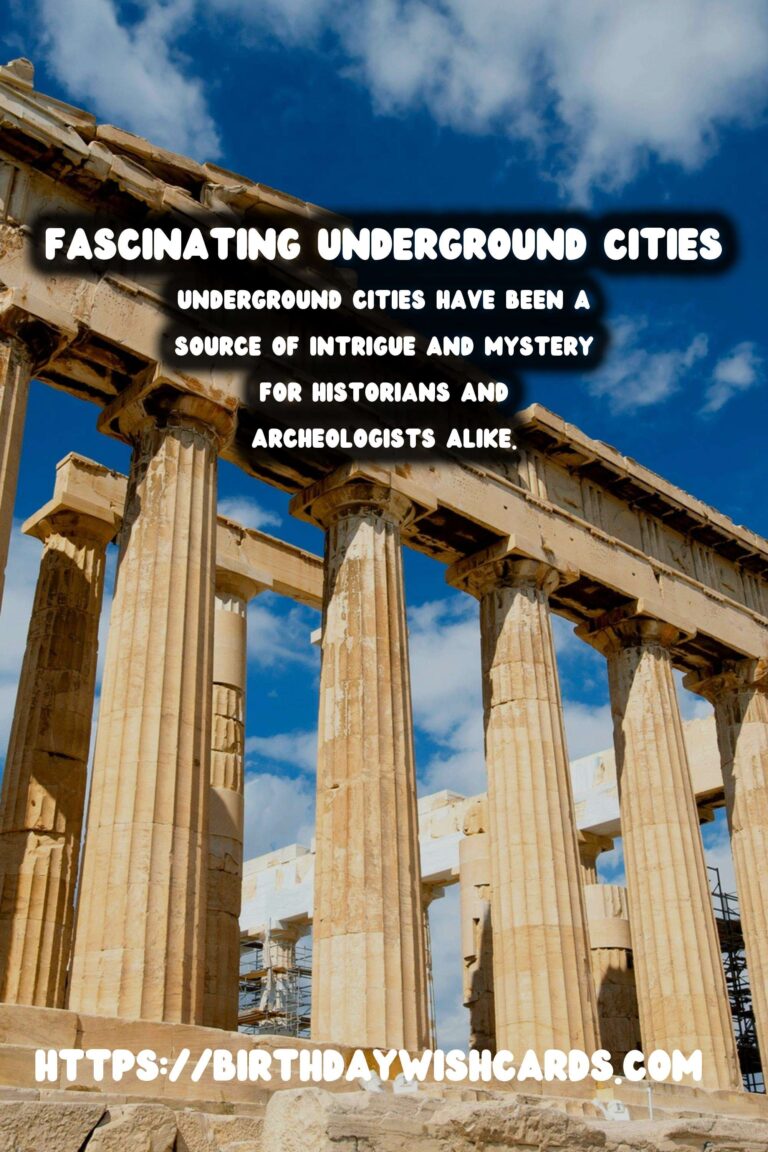
Underground cities have been a source of intrigue and mystery for historians and archeologists alike. Hidden beneath layers of earth and time, these subterranean complexes tell tales of ancient civilizations, wars, and adaptations to unique geographical and social challenges. In this article, we delve into the history, architecture, and cultural significance of some of the most famous underground cities from around the globe.
Derinkuyu: The Depth of Resilience
Nestled in the heart of Turkey’s Cappadocia region lies the ancient underground city of Derinkuyu. Discovered in the 1960s, this sprawling subterranean complex plunges over 200 feet into the earth. Historically used as a refuge during times of war and invasion, Derinkuyu could accommodate approximately 20,000 people along with their livestock and food supplies.
The intricate architecture of Derinkuyu includes ventilation shafts, storage rooms, chapels, and even schools. The engineers designed the city with heavy stone doors which could seal off sections in the event of a breach. Such architectural ingenuity reflects the inhabitants’ need for security and self-sufficiency in uncertain times.
Naours: A Network of Safety
In northern France, the underground city of Naours offers another captivating glimpse into life below the surface. Extending over 33 hectares with more than 300 rooms, the Naours complex has been used since Roman times. Initially carved out for stone, it later became a sanctuary during the Viking invasions and subsequently throughout the Middle Ages.
Naours is known for its extensive graffiti, with inscriptions dating as far back as the 17th century. These etchings provide a rich tapestry of personal stories that highlight the city’s role as a place of refuge and humanity in the face of adversity. During World War I, it even hosted Australian soldiers who left behind a significant number of graffiti messages.
Monterano’s Underworld: Italy’s Forgotten Gem
While Italy is famed for its historical above-ground cities, beneath the ancient ruins of Monterano lies a fascinating underworld. Located near Rome, Monterano was once a vibrant Etruscan city. Throughout history, it became strategically important due to its underground passages and caves, which were used for both habitation and defense.
The city eventually fell into decline, but its underground structures remained a testament to its storied past. Modern explorers can meander through these ancient corridors, gaining insight into the lives of its long-lost inhabitants and appreciating the blend of natural beauty and historical depth.
The Subterranean City of Kish: A Mesopotamian Marvel
The region of ancient Mesopotamia, often called the cradle of civilization, is home to the underground city of Kish. Existing approximately 5,000 years ago, Kish was an integral part of the Sumerian culture. Beneath its surface, tunnels and chambers spread like veins, facilitating trade and enhancing the city’s defense mechanisms against invasions.
Kish’s legacy as a trade and cultural hub is evidenced by the numerous artifacts and records unearthed, depicting its significance in early urban development. Contemporary archeologists continue to study this underground marvel for its contributions to human history and urban planning.
The Legacy of Underground Cities
Underground cities are more than historical curiosities; they represent human resilience, adaptability, and ingenuity. From the cooler climate in Cappadocia to the strategic protection in Naours, these subterranean complexes showcase how different cultures adapted to their environments and preserved their societies. As archeological exploration progresses, new discoveries will invariably add layers of understanding to these fascinating worlds hidden beneath our feet.
Ultimately, the tales told by these underground cities enrich our comprehension of human history, encouraging us to appreciate the intricacies and depth of ancient civilizations around the world.
Underground cities have been a source of intrigue and mystery for historians and archeologists alike. From the cooler climate in Cappadocia to the strategic protection in Naours, these subterranean complexes showcase how different cultures adapted to their environments and preserved their societies.
#UndergroundCities #HistoricalSignificance

